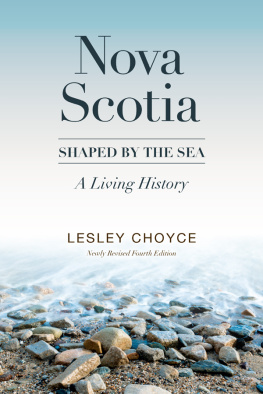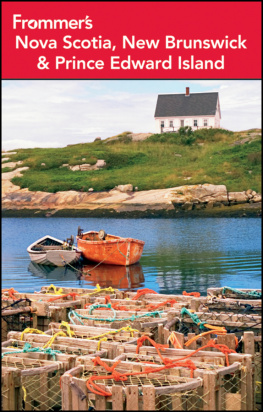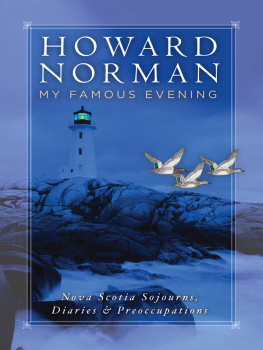The Legend of
Gladees Canteen
Down Home on a Nova Scotia Beach
David Mossman
Pottersfield Press, Lawrencetown Beach, Nova Scotia, Canada
Copyright 2019 David Mossman
All rights reserved. No part of this publication may be reproduced or used or stored in any form or by any means graphic, electronic or mechanical, including photocopying or by any information storage or retrieval system without the prior written permission of the publisher. Any requests for photocopying, recording, taping or information storage and retrieval systems shall be directed in writing to the publisher or to Access Copyright, The Canadian Copyright Licensing Agency (www.AccessCopyright.ca). This also applies to classroom use.
Library and Archives Canada Cataloguing in Publication
Title: The legend of Gladees Canteen: down home on a Nova Scotia beach / David
Mossman.
Names: Mossman, David, author.
Identifiers: Canadiana (print) 20190051655 | Canadiana (ebook) 20190051906 | ISBN
9781988286709 (softcover) | ISBN 9781988286716 (HTML)
Subjects: LCSH: Gladees Canteen (Hirtles Beach, N.S.)History | LCSH: RestaurantsNova
ScotiaHistory.
Classification: LCC TX945.5.G63 M67 2019 | DDC 647.9509716/23dc23
Cover image: The menu cover of Gladees Canteen by Kevin Creaser
Cover design: Gail LeBlanc
Pottersfield Press gratefully acknowledges the financial support of the Government of Canada through the Canada Book Fund for our publishing activities. We also acknowledge the support of the Canada Council for the Arts and the Province of Nova Scotia which has assisted us to develop and promote our creative industries for the benefit of all Nova Scotians.
Pottersfield Press
248 Leslie Road
East Lawrencetown, Nova Scotia, Canada, B2Z 1T4
Website: www.PottersfieldPress.com
To order, phone 1-800-NIMBUS9 (1-800-646-2879) www.nimbus.ca
Printed in Canada
Pottersfield Press is committed to preserving the environment and the appropriate harvesting of trees and has printed this book on Forest Stewardship Council certified paper.
Beaches are considered mirrors reflecting the way we treat our surroundings. They illustrate the way our society deals with vulnerable pioneer land. A natural beach is held to be more valuable than a development site. As much as these beaches should be forever accessible to eager visitors, it is important to accept that natural disasters will occur, and when they do, nature can be relied upon to repair itself, in the fullness of time.
Allan Billard and Donna Barnett
Beaches of Nova Scotia
Prologue
The Legend of Gladees Canteen: Down Home on a Nova Scotia Beach tells the story of a popular Nova Scotia beach and a family who, against the odds, constructed a simple canteen at Hirtles Beach in 1951 and ran it for forty years as a shining, sociable, homespun enterprise. That Gladees Canteen punched well above its weight in the restaurant business is confirmed beyond question by its inclusion in eight issues of Where to Eat in Canada. Thereby is Calvin Trillin confirmed an honest man, because as a globe-trotting foodie he steadfastly reminds his gourmet-conscious readers that of all the places in the world on which he reported, Gladees was the best of all.
Riverport Captain Douglas Himmelman (he of Bluenose II fame), while expert in a vastly different discipline, has seen probably as much of the world as Mr. Trillin. A frequent visitor to Gladees in his youth (he was thirty years old when the Sea Breeze opened for business), in 2017 he went on record with the following straightforward recollection: Everyone remembers the famous food at Gladees Canteen, especially Gladees fish and chips and her coconut cream pie. Customers enjoyed Gladees happy personality. Locally as well as far away, customers were saddened when Gladees Canteen closed. It was a great place as well to meet and make friends.
With good reason Gladees was voted one of the ten best restaurants in the nation. Its a pity that it did not endure, franchise-like, as happens to some lowly start-ups. But the founders did not approve of the idea of them or their beach ever becoming chained to pure commerce. Gladees called for a special co-operative and communal spirit. The heart and soul of the formula included patriarch John Hirtle; his wife Edna; children Paul, Gladys (Gladee), Florence (Flossie), and Cyril; Flossies daughter and son-in-law, Mary and Eric Creaser; and the Creaser children, Kevin and Wendy. They did it all, each contributing in their own way, but over the long haul, none more so than sisters Gladee and Flossie. To the general public, they offered a genuine welcome backed by a memorable menu, all in a setting brashly open to the forces of nature.
From the perspective of a stranger arriving at Gladees Canteen, the setup on Hirtles Beach must have seemed unusual, except for the fact that the visitor had likely already heard good things. High expectation well met was the dependable outcome, and good news is quick to spread. The upfront, generous welcome extended by Gladee and Flossie became the trademark of all visits to this outpost of hospitality. The era of Gladees Canteen is part of a story remarkable in many respects, not least for the fact that it took place in a small coastal Nova Scotia community blessed with a spectacularly dynamic living beach.
Today, both despite and because of insults offered by the human element, the beach the canteen called home continues to evolve much as nature intends, though nothing is guaranteed in the long run. In its time, the Hirtle family and its sparkling enterprise thrived in spite of relative isolation, uncertain funding, and domestic demons. As a Nova Scotia epic, the success of Gladees Canteen mirrors the recent history of Hirtles Beach, exemplifying the twists and turns locked up in legend.
This book tells the story of a Nova Scotia beach and a celebrated Nova Scotia family enterprise as drawn from my familys associations, personal memory, and the outlying stockpile of impersonal collective recollections a tapestry of events woven through the evolutionary fabric of a small, relatively isolated Maritime coastal community. The objective is to gain a heightened sense of the past, even as creeping collective amnesia threatens.
Introduction
Saturday, August 3, 1914, dawned clear and sunny over Hartling Bay with the promise of a scorcher except for the breeze generally marking these waters. Zenas Hirtle, great-uncle to my father Titus, set sail in his dory early that morning from Krebs Cove, a significant if rather precarious shelter for shore fishermen plying their primitive trade at the east end of Hirtles Beach.
Earlier that morning, despite his wifes protestations that he should first repair the fence enclosing their precious cow, Zenas was adamant that he was not going to worry about a cow. His focus was on fishing which, weather permitting, he and his fellow fishermen relied upon to keep food on the table. And today, Zenas repeated, is the finest kind of day to be on the water. Ill be back by noon. Just try and keep an eye on Bossie til then.











